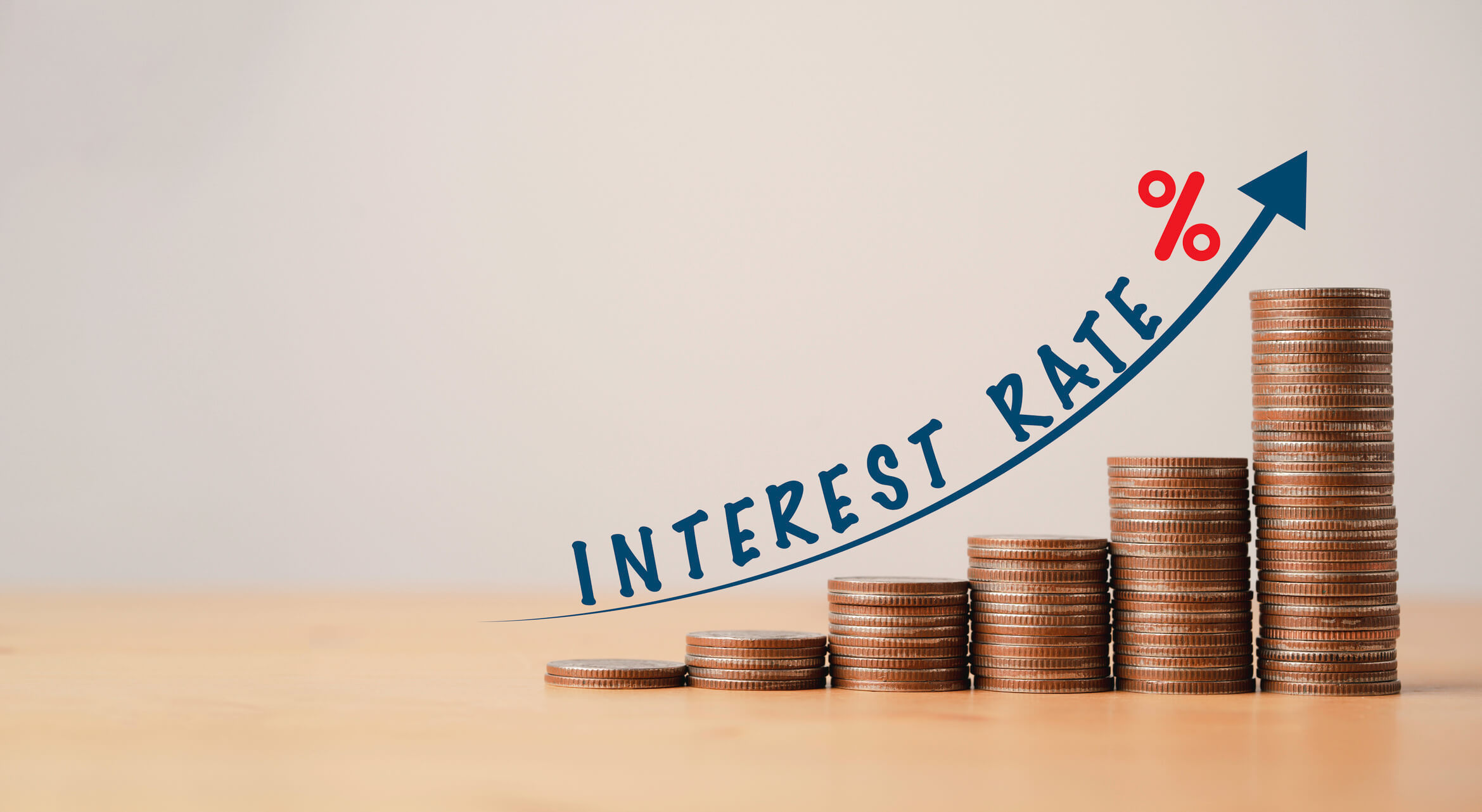Everything You Need to Know About Interest Rates
Interest rates represent the cost of borrowing money or the return earned on savings, expressed as a percentage of the principal amount, and they fundamentally influence every aspect of your financial life, from mortgage payments to investment returns. As someone who has guided thousands of small and mid-sized businesses through various economic cycles over the past two decades at Complete Controller, I’ve witnessed firsthand how understanding interest rates can mean the difference between financial success and struggle. Whether you’re managing business cash flow, planning personal investments, or simply trying to optimize your savings strategy, this article will equip you with practical strategies to navigate rate environments, reduce borrowing costs, and maximize returns on your hard-earned money.

What are interest rates, and how do they actually work?
- Interest rates are the percentage charged by lenders for borrowing money or paid by financial institutions on deposits, serving as the fundamental price mechanism in financial markets
- They work by compensating lenders for risk and opportunity cost while providing borrowers access to immediate capital
- Central banks like the Federal Reserve set benchmark rates that influence all other interest rates throughout the economy
- The actual rate you receive depends on factors including credit score, loan type, economic conditions, and market demand for money
- Understanding this mechanism helps you make better decisions about when to borrow, save, or invest based on the rate environment
Types of Interest Rates That Affect Your Financial Decisions
Interest rates function as the fundamental pricing mechanism for money itself, representing far more than just a simple percentage on your loan or savings account. When you borrow money, you’re essentially renting someone else’s capital, and the interest rate reflects the price of that rental based on multiple risk factors and market conditions.
The mechanics of how interest rates work involve a complex interplay between supply and demand for money in the financial system. When many people want to borrow money but few are willing to lend, rates tend to rise due to increased competition among borrowers. Conversely, when there’s abundant money available for lending but few borrowers, rates typically fall as lenders compete for customers.
Federal interest rate policy and your daily life
The Federal Reserve, America’s central bank, plays a crucial role in determining the baseline interest rate environment through its federal funds rate—the rate at which banks lend to each other overnight. When the Fed raises this benchmark rate, it becomes more expensive for banks to borrow money, and they pass these higher costs on to consumers through increased loan rates and improved savings rates.
However, the relationship between Fed policy and the rates you actually pay isn’t always direct or immediate. Banks consider their own costs, risk assessments, and profit margins when setting rates for different products. A mortgage might take weeks to reflect Fed changes, while credit card rates often adjust more quickly. Understanding this lag effect helps you time major financial decisions more strategically.
Interest rate calculator fundamentals
Every interest rate scenario involves four key variables: principal (the amount borrowed or invested), rate (the percentage charged or earned), time (the duration of the loan or investment), and compounding frequency (how often interest is calculated and added to the balance). The mathematical relationship between these factors determines your total cost or return, making it essential to understand how even small rate differences compound over time.
Mortgage Interest Rates Strategy
Understanding the different types of interest rates helps you choose the right financial products and avoid costly mistakes that can impact your wealth-building for decades. Fixed interest rates remain constant throughout the loan or investment term, providing predictable monthly payments that make budgeting easier but potentially costing more if market rates decline.
Variable interest rates, also called adjustable rates, fluctuate based on benchmark indices like the prime rate or LIBOR, starting lower than fixed rates but carrying the risk of future increases. These products can save money initially but require careful monitoring and financial flexibility to handle payment changes.
Mortgage rates represent one of the most significant interest rate decisions most people make, with even small rate differences creating massive long-term financial impacts. A conventional 30-year mortgage at 6% versus 7% on a $300,000 loan results in over $60,000 difference in total interest paid. Between 1971 and 2025, 30-year fixed-rate mortgages averaged 7.71%, reaching an all-time high of 18.63% in October 1981 during the inflation crisis and hitting a record low of 2.65% in January 2021 during the pandemic.
Savings account interest rates optimization
While borrowing rates capture most attention, the interest you earn on savings and investments equally impacts your financial success over time. High-yield savings accounts, money market accounts, and certificates of deposit offer different rate structures and liquidity features that should align with your specific cash flow needs and risk tolerance.
However, focusing only on the highest advertised rate without considering fees, minimum balances, and access restrictions can backfire. The best savings strategy balances competitive rates with practical functionality, ensuring you can access funds when needed without penalty while maximizing returns on money you won’t need immediately.
How to Lower Interest Rates on Your Existing Debt
Reducing the interest rates on your current debt represents one of the fastest ways to improve your financial position without increasing your income or drastically cutting expenses. Credit score improvement stands as the most powerful tool for lowering rates, as lenders price risk primarily based on your payment history, credit utilization, and overall creditworthiness.
Debt consolidation through personal loans or balance transfers can dramatically reduce your average interest cost when done strategically. If you’re carrying credit card balances at 18-24% interest, consolidating into a personal loan at 8-12% immediately cuts your interest expense in half while simplifying your payment structure.
Negotiation and refinancing strategies
Many borrowers don’t realize that interest rates on existing loans are often negotiable, especially when your financial profile has improved since the original loan. Calling your current lenders to request rate reductions based on improved credit scores, increased income, or competitive offers from other institutions frequently succeeds, particularly for credit cards and personal loans.
During 2020’s record-low rate environment, homeowners who refinanced their 30-year fixed-rate mortgages saved an average of over $2,800 annually in mortgage payments. The typical refinance involved a loan of approximately $300,000, with borrowers reducing their rate from 4.3% to 3.1%.
Impact of Interest
 Rates on Loans Across Different Products
Rates on Loans Across Different Products
The relationship between interest rates and loan affordability varies significantly across different types of borrowing, making it crucial to understand how rate changes affect each category of debt in your financial plan. Credit card debt, typically carrying the highest interest rates at 15-25%, creates the most immediate impact from rate changes since most cards use variable rates tied to the Federal Reserve’s benchmark. Commercial bank interest rates on credit card plans reached 21.16% in May 2025, representing some of the highest consumer borrowing costs in the financial system.
Student loans present a more complex picture. Federal loans offer fixed rates set annually, but private loans often carry variable rates that fluctuate with market conditions. The long repayment terms on student loans mean that even small rate differences compound into significant total cost variations over 10-20 year repayment periods.
Auto loans and personal lending
Auto loan rates typically fall between mortgage and credit card rates, with new car financing often subsidized by manufacturers to stimulate sales, while used car loans carry higher rates due to increased depreciation risk. The relatively short terms (3-7 years) on auto loans mean that rate differences create smaller total cost impacts than mortgages, but monthly payment changes can still significantly affect your budget.
Personal loans occupy a unique space in the lending market, offering fixed rates and predictable payments for debt consolidation, home improvements, or major purchases without collateral requirements. These loans typically carry higher rates than secured debt but lower rates than credit cards, making them valuable tools for strategic debt management.
Best Savings Interest Rates and Investment Strategies
Maximizing the interest earned on your savings and conservative investments requires understanding the current rate environment and matching different savings vehicles to your specific liquidity and return objectives. While the national average savings account interest rate sits at just 0.57% APY, high-yield savings accounts are currently offering rates up to 4.66% APY. This represents more than an 8x difference in earning potential, meaning someone with $10,000 in savings could earn $466 annually instead of just $57 by choosing the right account.
Certificates of deposit (CDs) traditionally offer higher rates than savings accounts in exchange for locking up your money for specific terms ranging from three months to five years. The current rate environment affects CD strategy significantly—when rates are rising, shorter-term CDs allow you to reinvest at higher rates more quickly, while falling rate environments favor longer terms to lock in current rates.
Money market and high-yield account strategies
Money market accounts often provide the best balance of competitive rates and practical functionality. They offer check-writing privileges and debit card access while earning significantly more than traditional savings accounts. These accounts work particularly well for emergency funds and short-term savings goals where you need occasional access but want to maximize returns on idle cash.
The key to savings rate optimization lies in regularly reviewing and moving money as rate environments change. Banks frequently offer promotional rates to attract new customers while gradually reducing rates on existing accounts over time. Setting calendar reminders to review rates quarterly ensures you’re capturing the best available returns without excessive account churning.
Current Interest Rates for Mortgages and Market Timing
The current mortgage rate environment presents both challenges and opportunities for homebuyers and existing homeowners considering refinancing decisions. As of July 31, 2025, the average 30-year fixed mortgage rate stands at 6.72%, representing a slight two basis point decrease from the previous week but remaining significantly elevated from recent years. This rate has been trading in a narrow range between 6.67% and 6.81% for four consecutive weeks, showing relative stability despite broader economic uncertainty.
The relationship between mortgage rates and home prices creates complex dynamics for timing real estate decisions. Higher rates reduce affordability for many buyers, often leading to slower home price appreciation or even price declines in some markets. However, this doesn’t automatically make buying more affordable if your monthly payment capability hasn’t increased correspondingly.
Final Thoughts
Successfully navigating today’s interest rate environment requires both understanding the fundamental mechanics of how rates work and implementing practical strategies to optimize your financial position. From negotiating lower rates on existing debt to maximizing returns on savings through strategic account selection, the knowledge you’ve gained here can translate into thousands of dollars saved or earned over time.
As I’ve learned through decades of guiding businesses through various economic cycles, the most successful financial strategies adapt to current conditions while maintaining long-term perspective. Take action today by reviewing your current debt rates, exploring high-yield savings options, and creating a plan to optimize your interest rate exposure. The team at Complete Controller stands ready to help you implement these strategies and develop comprehensive financial solutions tailored to your unique situation.

Frequently Asked Questions About Interest Rates
How often do interest rates change, and what triggers these changes?
Interest rates change based on multiple factors, with the Federal Reserve typically adjusting benchmark rates 4-8 times per year during active policy periods. Individual loan and savings rates can change daily based on market conditions, bank policies, and competitive pressures. Major triggers include inflation data, employment reports, and economic growth indicators.
What credit score do I need to get the best interest rates?
Generally, credit scores above 740 qualify for the best available rates on most loan products, though specific requirements vary by lender and loan type. Mortgage lenders often offer their best rates to borrowers with scores above 760, while personal loans may require 720+ for top-tier pricing. Even improving your score from 650 to 700 can reduce rates by 1-2% on many products.
Should I choose a fixed or variable interest rate for my mortgage?
Fixed rates provide payment stability and protection against rising rates, making them ideal when rates are historically low or if you plan to stay in your home long-term. Variable rates typically start 0.5-1% lower than fixed rates and work well if you plan to sell within 5-7 years or believe rates will decline. Your risk tolerance and financial flexibility should guide this decision.
How much can I realistically save by refinancing my loans?
Refinancing typically makes sense when you can reduce your rate by at least 0.75-1% after accounting for closing costs. On a $300,000 mortgage, dropping from 7% to 6% saves approximately $200 monthly and $72,000 over the loan term. For smaller loans like auto or personal loans, even 0.5% reductions can justify refinancing due to lower transaction costs.
Why are my savings account rates so much lower than loan rates?
Banks profit from the spread between what they pay depositors and charge borrowers, typically maintaining a 3-4% margin. Additionally, savings accounts offer instant liquidity and FDIC insurance, reducing the return compared to longer-term or riskier investments. Shopping among online banks and credit unions can help you capture higher savings rates while maintaining security and access.
Sources
- Federal Reserve Bank of St. Louis. (2025, May). “Commercial Bank Interest Rate Survey.” www.federalreserve.gov/data/statistics
- Freddie Mac. (2025, July 31). “Primary Mortgage Market Survey.” www.freddiemac.com/pmms
- NerdWallet. (2025, August). “Banking Survey: High-Yield Savings Account Rates.” www.nerdwallet.com/banking/rates
- TheMortgageReports.com. (2025). “Historical Mortgage Rate Data 1971-2025.” www.themortgagereports.com/historical-rates
- Bankrate. (2025, August). “National Average Survey: Deposit Rates.” www.bankrate.com/rates
- Federal Reserve. (2025). “Monetary Policy Overview.” www.federalreserve.gov/monetarypolicy.htm
- Consumer Financial Protection Bureau. (2025). “What is a Mortgage Rate?” www.consumerfinance.gov/ask-cfpb/what-is-a-mortgage-rate-en-2047
- Trading Economics. (2025, July). “United States Mortgage Rate.” www.tradingeconomics.com/mortgage-rates
- Freddie Mac Research & Insights. (2021, March 5). “Refinance Trends in 2020.” www.freddiemac.com/research/insights
- Federal Reserve Bank of St. Louis. (2025). “Credit Card Interest Rate Data.” www.fred.stlouisfed.org/series/TERMCBCCALLNS
- Complete Controller. “Accounting Outsourcing Economics.” www.completecontroller.com/accounting-outsourcing-economics
- Complete Controller. “5 Reasons Why Borrowing Money is Better Than Giving Up the Equity.” www.completecontroller.com/5-reasons-why-borrowing-money-is-better-than-giving-up-the-equity
- Complete Controller. “How to Manage Your Credit Responsibly.” www.completecontroller.com/how-to-manage-your-credit-responsibly
- Wikipedia. “Savings Account.” en.wikipedia.org/wiki/Savings_account
- Federal Reserve Economic Data (FRED). (2025). “Interest Rate Statistics.” www.fred.stlouisfed.org/categories/22
 About Complete Controller® – America’s Bookkeeping Experts Complete Controller is the Nation’s Leader in virtual bookkeeping, providing service to businesses and households alike. Utilizing Complete Controller’s technology, clients gain access to a cloud platform where their QuickBooks™️ file, critical financial documents, and back-office tools are hosted in an efficient SSO environment. Complete Controller’s team of certified US-based accounting professionals provide bookkeeping, record storage, performance reporting, and controller services including training, cash-flow management, budgeting and forecasting, process and controls advisement, and bill-pay. With flat-rate service plans, Complete Controller is the most cost-effective expert accounting solution for business, family-office, trusts, and households of any size or complexity.
About Complete Controller® – America’s Bookkeeping Experts Complete Controller is the Nation’s Leader in virtual bookkeeping, providing service to businesses and households alike. Utilizing Complete Controller’s technology, clients gain access to a cloud platform where their QuickBooks™️ file, critical financial documents, and back-office tools are hosted in an efficient SSO environment. Complete Controller’s team of certified US-based accounting professionals provide bookkeeping, record storage, performance reporting, and controller services including training, cash-flow management, budgeting and forecasting, process and controls advisement, and bill-pay. With flat-rate service plans, Complete Controller is the most cost-effective expert accounting solution for business, family-office, trusts, and households of any size or complexity.
 Reviewed By:
Reviewed By:




